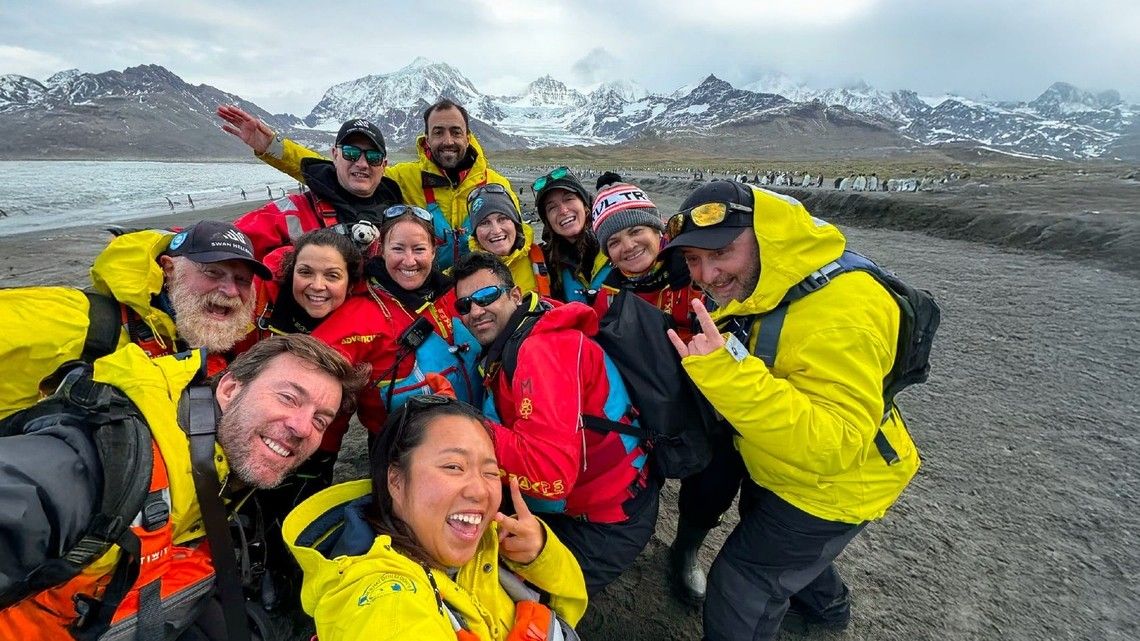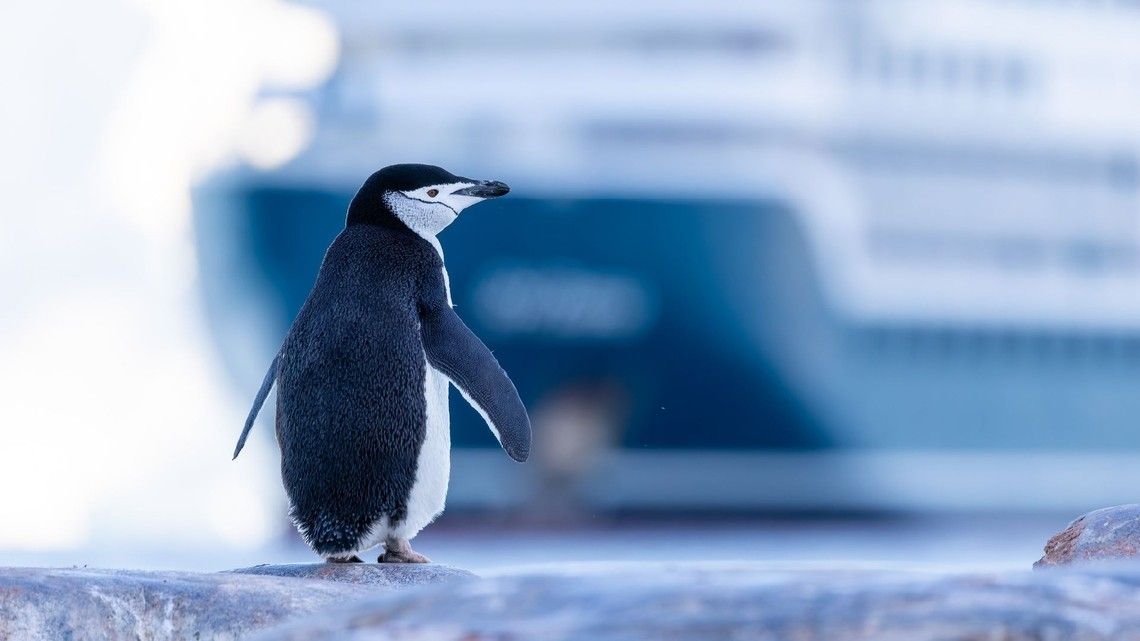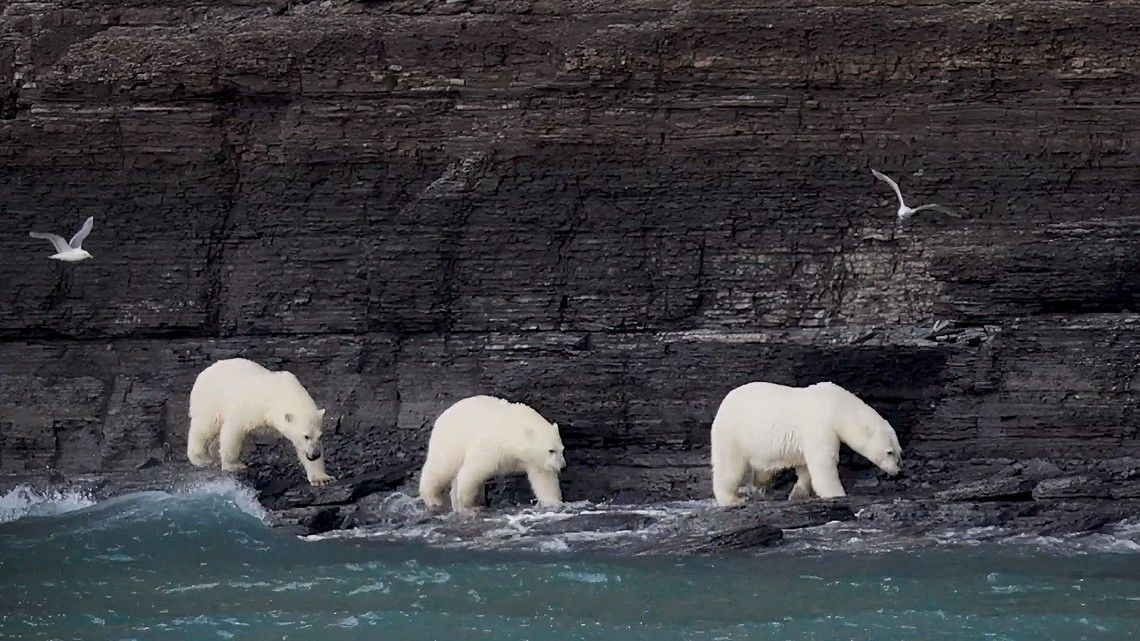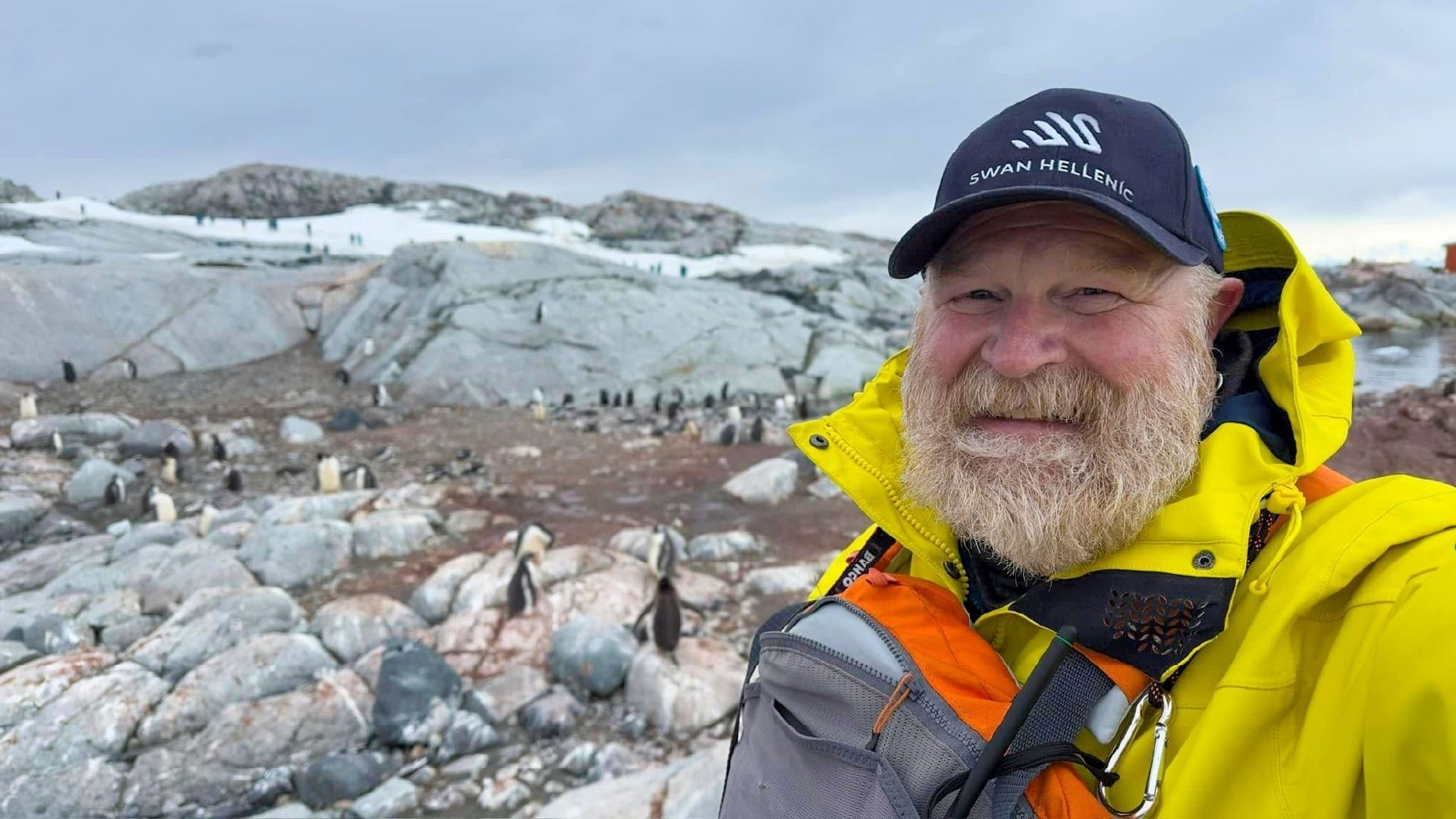"Polar travel has reminded me that every environment can benefit from our actions to lessen our impact and reverse the mistakes of our past."
"By experiencing these life-changing places, and sharing your experience with others, we become ambassadors for polar regions and the wonderful web of life that lives there."
Kevin Snair’s passion for nature runs as deep as the fjords he now explores for a living. From a childhood in rural Nova Scotia to polar expeditions in Antarctica and the Arctic, his journey has been shaped by curiosity, resilience, and a thirst for adventure.
Hey Kevin, what first inspired your passion for nature, and how did growing up in Halifax shape your love for wilderness exploration?
Kevin: I was very fortunate to grow up in rural Nova Scotia in a family who spent much of their time in the outdoors. At the age of five, I was enrolled in the Scouting movement and I spent the next 38 years camping, hiking and learning about our place in nature. I vividly remember a camping trip when I was nine years old, hiking in Kejimkujik National Park when we came across some scat in the trail. Our leader stopped, looked closely at it, picked it up, broke it to look inside, and we all thought he was crazy. I am now that guy!
How did your time in the Canadian Navy influence both your photography and your interest in polar exploration?
Kevin: At seventeen, I joined the Canadian Naval Reserve as a part-time job offering travel and exploration on the high seas. On my second summer, I was deployed on a small gate-vessel on the West Coast (4500 km from home). Sailing along the inside passage of Vancouver and Alaska offered scenery that words could not convey in my weekly letters home. So I bought my first “real” camera and made it my mission to learn how to share my experiences through my photographs. Thirty-six years later, when I found myself on my first Expedition to Antarctica, I was flooded with nostalgia. I was once again sailing unfamiliar waters on a grand adventure, documenting it all through the lens of my cameras.
What makes you most excited about joining an expedition cruise and sharing your passion for exploration with passengers?
Kevin: Now that this is my profession, I see things differently and perhaps look forward to different experiences each time I leave home. I’m always excited to join a new Expedition Team. There is a special energy that comes from working alongside an international mix of like-minded people who share a passion for exploration. We will rely on one another for safety, but also for emotional support as we share adventures together. I love the concept of Expedition Cruising because we live with our guests for a long enough period of time to get to know them a bit. It’s the relationships you develop onboard that allow our experiences ashore to be that much more connected.

From Scout Leader to polar guide
When did you first start guiding, and what makes someone a great guide?
Kevin: Unofficially, I’ve been guiding since I was sixteen as a Scout Leader. But I began professionally in 2009 after applying for a guiding job in a Provincial Park near my home. The manager saw something in me and hired me, even after I admitted I wasn’t comfortable speaking with strangers. He said, “You’ll get over that.” And, oh, did I get over that! Guiding became intoxicating—sharing the wonders of nature with eager explorers who are hungry to learn. What’s served me best in this work is my child-like curiosity. I want to know everything about what I see, and then pass that wonder on with simple, clear explanations.
What do you find most rewarding about guiding in the polar regions?
Kevin: Being part of a Polar Expedition Team is a dream job for me. Every day brings adventure and the unknown. Whether I’ve been to a specific landing five times before or this is my first time, you never know what we will experience or see. I can be squatted down documenting a beautiful tufted saxifrage when out of nowhere, an arctic fox will scamper up beside me, curious about what I’m photographing. For most of our guests, these ecosystems are strange and new, and it can be overwhelming. I’ve hugged guests as they cried at the sight of a walrus haulout, and shared in moments that are deeply moving to us both. It’s why I guide.
How does guiding in the polar regions differ from other locations?
Kevin: Expedition Cruising is full of inherent risks, that’s part of what makes our trips true adventures. Weather can change when Zodiac cruising and suddenly waves are splashing over us, as guests grasp the safety ropes while we slowly make our way back to the ship. The water is often crystal clear, decorated with sparkling ice, but also freezing cold. Of course, safety is always in the forefront and we assess every opportunity for safety, never wanting to have to put our extensive training to the test. We are experiencing nature at it’s rawest. Penguins are mesmerizing and can distract from the young fur seal that may try to nip at your calves. But nothing compares to the challenges of the Arctic. Everyone has to remain on high-alert to ensure a bear doesn’t show up to ruin the party.
As a guide, what kind of behavior do you encourage in guests when spotting wildlife like polar bears, and why is that important?
Kevin: Spotting polar bears can be exhilarating but your reaction should be very different based on the circumstance. When we’re on the ship and scanning the shores for wildlife, don’t be shy to alert everyone if you think you see something. More eyes can help determine if you are truly seeing a bear or just a beautiful off-white rock. When we are ashore, we are always encouraged to be quiet so that we don’t disturb the wildlife (and it makes for a more natural experience for all guests as well). But, if you were to spot a bear while you are on shore, alert the closest guide immediately. Put your camera away and prepare to evacuate. I would encourage you to try to do this quietly as we don’t want to panic other guests. The guides are trained in how to manage a polar bear situation while keeping everyone calm.

Capturing Moments: Behind the Camera with Kevin
How do you use photography as a tool for environmental conservation?
Kevin: When I photograph a scene or wildlife encounter, I don’t try to create a specific message. I just try to introduce people to a world they haven’t seen for themselves. I believe people fight to preserve what they know and love. If my work helps someone see beauty in a solitary polar bear or a rainbow in a humpback’s blow, maybe they’ll be inspired to make small changes to protect that beauty.
What tips do you have for guests who are hoping to improve their own wildlife photography skills during an expedition cruise?
Kevin: My biggest piece of advice is to slow down and enjoy the moment. My best animal photos are seldom shot in the first few minutes that I’m observing them. Settle in and let things develop. The longer you spend trying to understand your subject, the better they will be represented in your work. And don’t forget, we are in incredibly special places. Don’t consume your thoughts with the need to get it all in photographs. Be sure to put your camera away and just be in the moment as well.
How does Arctic light affect your photography?
Kevin: Fortunately, we explore the polar regions during their summers which makes for long days and incredible light. Filming as the light rakes across rugged mountains, sparkles through crystal icebergs, or silhouettes wildlife against golden sunsets are just a small part of what makes these locations magical.
How do you prepare your equipment for extreme conditions like those found in the polar regions?
Kevin: When we think about filming in polar regions, the mind first goes to the cold. Arriving onboard with multiple extra batteries is critical and charging them all every night is a must. When you head out on an excursion, carry the spares inside your jacket, close to your body to keep them warm. But worse than the cold, is the salt water. Splashes in the Zodiac can absolutely destroy your equipment. Keep your camera inside a waterproof bag when transporting it ashore but if you want to film while in the zodiac, invest in a rainproof cover. Beyond that, always use your lens hood to guard against rain and splashes and always be aware of where your lens is pointed when you aren’t shooting. Pointing the lens towards the ground or away from the wind will reduce moisture from accumulating on the lens.

Lessons from nature
What’s the biggest lesson you've learned from your time in the polar regions?
Kevin: There’s an inherent sense of “protecting the environment” when we travel to the polar regions. We are privileged to experience unspoiled wilderness and that makes us want to keep it pristine. Perhaps polar travel has reminded me that every environment can benefit from our actions to lessen our impact and reverse the mistakes of our past.
What exciting wildlife encounters have you managed to capture on film?
Kevin: I have been blessed with many incredible wildlife encounters, each with different levels of excitement, and danger. I’ve filmed leopard seals curiously circling my Zodiac. I’ve had whales surfacing mere meters from us, their breath spraying our guests with a mist both exciting and odorous. And I’ve filmed the harsh realities of Southern giant skuas separating a young gentoo from its creche and killing it…
And what's the most incredible wildlife encounter you’ve ever had?
Kevin: My most incredible encounter was in Svalbard while fulfilling the role of a polar bear guard. We had just evacuated all our guests from a walrus haulout due to reports of a polar bear in the vicinity. I was a kilometer from the landing site and was now starting my return to the zodiacs when a bear came from nowhere and surprised me. My initial thought was “Wow! What an incredible creature, but safety first." Our main aim is to not pursue, lure or disturb bears but on this occasion the bear was hidden from our sight. Using our safety protocols, even though my rifle was slung over my shoulder, I used my flare gun instead to try to scare the bear. This deterred the bear enough to allow me to make the lonely walk back to the Zodiacs while he sat and watched me.
What are the key rules when guiding near polar bears?
Kevin: Being a member of AECO, we have many rules in place to ensure the protection of our guests and the fragile ecosystem we operate in. Whenever we set foot ashore in polar bear territory, safety is paramount at all times. We always keep our distance, even if it limits photo opportunities. As a polar bear guard, I have to suppress my sense of wonder and turn all my attention to the possibility of a bear unexpectedly appearing. Although it sounds counterintuitive to work so hard to keep guests and polar bears far apart (when that is exactly what they’ve come to see), it is essential so that neither is negatively impacted by our adventure. As guides, there is nothing we want more than to facilitate exceptional experiences for our guests every day. If there’s one rule above all others as a guest when ashore—always do what the guides are requesting. There’s always a reason for the request.
Exploring the white
Why do you think it’s so important for travelers to experience the Arctic in person, especially on an expedition cruise?
Kevin: As a photographer/videographer, it sounds contradictory to say that photos can never truly capture the feeling of the Arctic but it is true. A photo can never capture the feeling of saturated mosses on the tips of your fingers or the smell of alpine whitlow-grass on an overcast morning. And nothing can replace the excitement of peering through your binoculars and spotting your first majestic polar bear. These things can only be achieved by experiencing them with a team of experts who’s only goal is to ensure you get the most out of every opportunity.
How do you think expedition cruises help promote polar conservation efforts?
Kevin: I think we tend to look after the things that have had an impact on us. By experiencing these life-changing places, and sharing your experience with others, we become ambassadors for polar regions and the wonderful web of life that lives there. This then trickles down to wanting to care for all places, and the desire to lessen our impact on the world as a whole.
What makes the Arctic such a unique and unforgettable destination?
Kevin: Much of the Arctic is such a rugged, harsh environment teaming with some of the most delicate, fragile life. There is nothing commercial about the places we visit and the experiences we share. When you couple this rich environment with the welcoming faces of the strong people who choose to make this their home, you end up with an experience that can be found nowhere else on Earth.
Lastly, what advice would you give to future expedition guides?
Kevin: Get out and explore the world. The more different things seem, the more connections you will see within their similarities. Be curious. Don’t be afraid to show your excitement. Wake up each morning ready for a new adventure but never take it for granted.
All pictures are courtesy of Kevin Snair.
